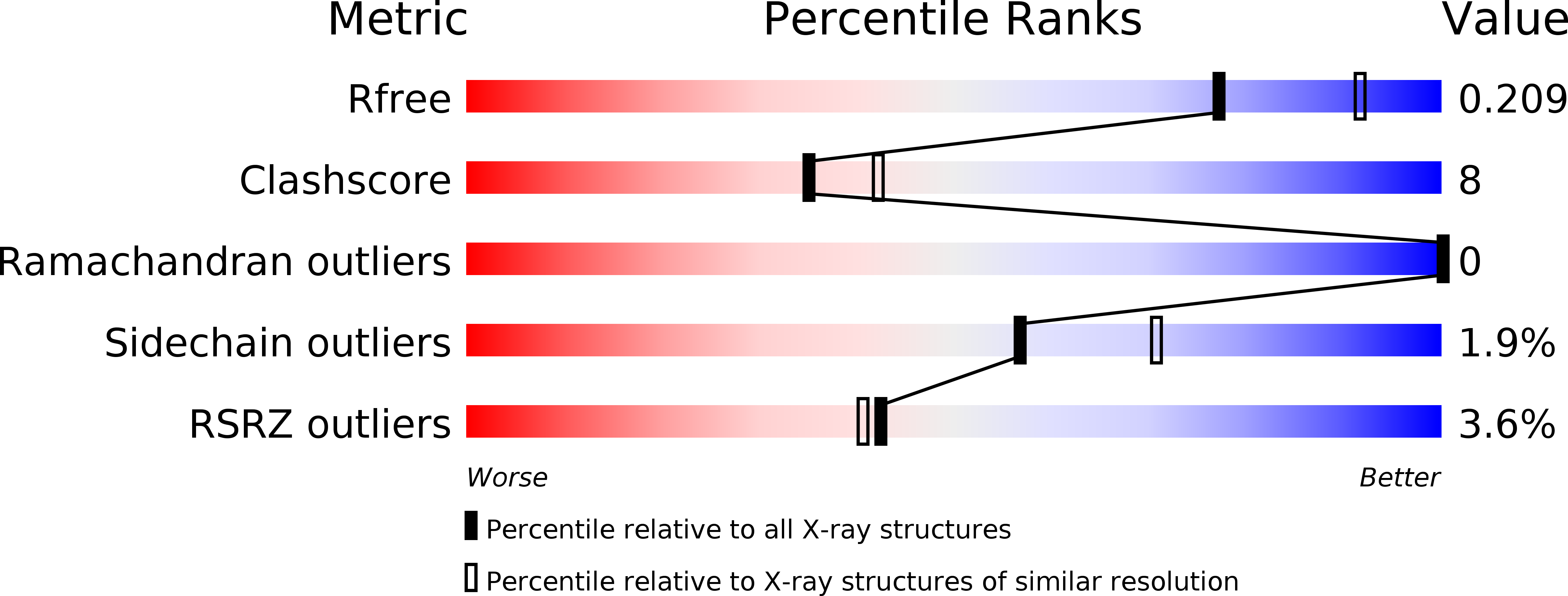Generation and Characterization of Anti-VGLUT Nanobodies Acting as Inhibitors of Transport.
Schenck, S., Kunz, L., Sahlender, D., Pardon, E., Geertsma, E.R., Savtchouk, I., Suzuki, T., Neldner, Y., Stefanic, S., Steyaert, J., Volterra, A., Dutzler, R.(2017) Biochemistry 56: 3962-3971
- PubMed: 28731329
- DOI: https://doi.org/10.1021/acs.biochem.7b00436
- Primary Citation of Related Structures:
5OCL - PubMed Abstract:
The uptake of glutamate by synaptic vesicles is mediated by vesicular glutamate transporters (VGLUTs). The central role of these transporters in excitatory neurotransmission underpins their importance as pharmacological targets. Although several compounds inhibit VGLUTs, highly specific inhibitors were so far unavailable, thus limiting applications to in vitro experiments. Besides their potential in pharmacology, specific inhibitors would also be beneficial for the elucidation of transport mechanisms. To overcome this shortage, we generated nanobodies (Nbs) by immunization of a llama with purified rat VGLUT1 and subsequent selection of binders from a phage display library. All identified Nbs recognize cytosolic epitopes, and two of the binders greatly reduced the rate of uptake of glutamate by reconstituted liposomes and subcellular fractions enriched with synaptic vesicles. These Nbs can be expressed as functional green fluorescent protein fusion proteins in the cytosol of HEK cells for intracellular applications as immunocytochemical and biochemical agents. The selected binders thus provide valuable tools for cell biology and neuroscience.
Organizational Affiliation:
Department of Biochemistry, University of Zurich , Winterthurerstrasse 190, 8057 Zurich, Switzerland.















